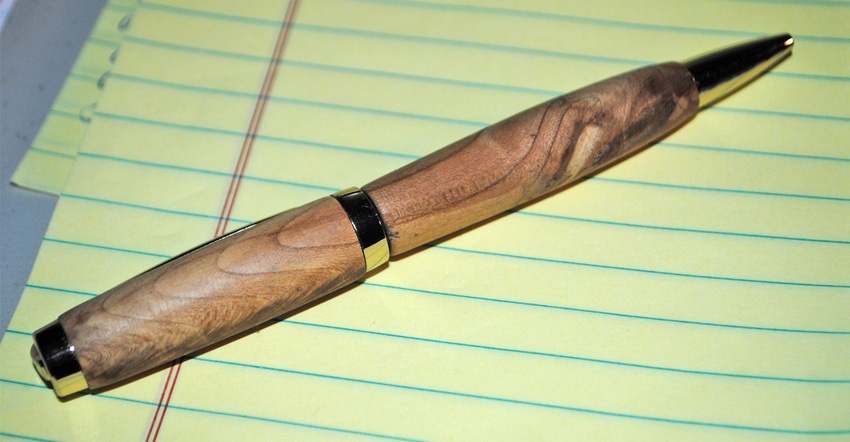
A few years ago, one of our neighbors and woodworking friends harvested an old cherry tree from our orchard. The tree had been in decline for several years before it finally dried up completely.
When I invited our friend to harvest the tree, although it had been infested with insects and had stood completely dead for a couple of years, he jumped at the chance.
He is a wood artist, like many of the woodworkers I know. He makes pens from salvaged and purchased wood from all over the world. So, when my daughter graduated from high school, he gave her a pen he had made from the cherrywood he had salvaged from our farm.
The tree was not large, but this woodworker was able to find value in the short chunk of trunk that he harvested. The results were beautiful.
Another of our woodworking friends sought out crooked boxelder trees from creek bottoms. The boxelder is not known for high quality or volume wood products. In our region, it is better known to grow in unusual shapes in the creek bottom, normally with rotted areas throughout the tree.
However, our friend loved the purple color of the grain in boxelder wood, so he meticulously worked with the wood to make picture frames that were simply amazing.
With emerald ash borer and mountain pine beetle, among hundreds of other tree pests, so prevalent in specific regions, farmers and ranchers — as well as rural communities — are left with significant losses of the groves, woodlands and farm trees on their property, along their streets and in their parks.
Emerald ash borer alone has killed millions of trees across the country so far. What can we do with these lost ash trees, or those dead or dying trees that succumbed to some insect, disease, storms or drought?
Some salvageable logs can be milled into lumber and flooring, or even cabinetry and trim. In these cases, trees need to be harvested early and in a way that preserves the timber value of the individual logs.
In some of the most hard-hit EAB-infested states in the Great Lakes and New England regions, research projects are now being conducted to find new ways to use the massive quantities of insect-damaged logs, and to educate tree harvesters, mills, architects and construction contractors about the uses for this timber.
Most of the time, the longer the tree has been dead, the less value it has. A U.S. Forest Service report on utilization of conifers attacked by mountain pine beetle explains the impact of time on timber value. Live trees or those that were recently attacked likely will have wood quality that is unchanged.
However, if you wait until there are no fine twigs left, the tree has turned gray and 10% of the bark is gone, you will have a loss of wood volume and value for solid wood products. If there is less than 90% of the bark remaining, with bark sloughing off and obvious weather checks, not only has the timber lost great value, but there also may be increased safety issues for harvest.
It might always be easier to push the trees into a pile and light a big fire to get rid of them. However, whether it is a cherry tree in an orchard, a conifer in a forest or a large ash tree that has been infested with EAB, there may be value in that timber if you harvest early and seek out professionals to assess the quantity and quality of the lumber you have.
About the Author(s)
You May Also Like






